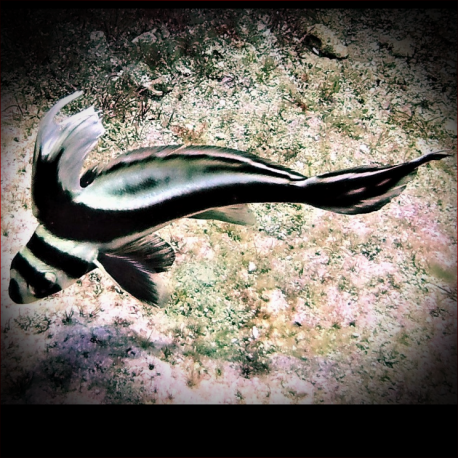More info
Datasheet
| Minimum Tank Size | 700 litres / 184.92 US gallons |
| Maximum Size | 27.0cm / 10.63inches |
| Reef Compatible | Reef safe with caution |
| Temperament | Docile |
| Temperature | 22.2°C / 71.96°F - 25.6°C / 78.08°F |
| Specific Gravity | 1.020-1.025 |
| Carbonate Hardness | 8-12 |
| pH | 8.1-8.4 |
General Description
Spotted drum, scientifically known as Equetus punctatus, is a species belonging to the Sciaenidae family, also referred to as Drums/Croakers. These fish are characterized by their spotted appearance and can grow up to 27.0cm in size. They are native to the Western Atlantic, ranging from locations such as Bermuda and Florida to Brazil.
Aquarium Suitability
Spotted drums are recommended for experienced aquarists due to their delicate nature and specific care requirements. They are best suited to tanks with a minimum size of 700 liters. Due to their slow feeding habits and preference for live food, they can be challenging to feed, especially when housed with faster-eating species.
Demands
The spotted drum is a sensitive species, especially during transportation and acclimatization. They are nocturnal creatures, preferring dim lighting conditions for increased activity. These fish are docile and may hide initially when introduced to a new environment, requiring good hiding spots within the aquarium setup.
Care and Hardiness
Care for spotted drums involves providing a well-established tank with ample hiding places, such as live rocks. Regular feeding several times a day is crucial, especially during the initial acclimatization period. They are prone to stress and should not be housed with aggressive or competitive feeders to ensure they receive an adequate food supply.
Reef Suitability
While spotted drums are considered reef-safe with caution, they may pose a threat to smaller crustaceans like shrimp and crabs due to their feeding behavior. Their foraging through sand for food can also stir up detritus, potentially clouding the water in the tank.
Aquarium Setup
To set up an ideal environment for spotted drums, it is essential to mimic their natural habitat. Providing hiding spaces, dim lighting for their nocturnal activity, and a sandy substrate for foraging are key aspects of the tank setup. Additionally, maintaining stable water conditions within the recommended parameters of pH 8.1-8.4, salinity 1.020-1.025, and a temperature range of 22.2-25.6°C is crucial for their well-being.
Behaviour
Spotted drums are shy and docile, preferring to hide under overhangs or in holes during the day and becoming more active at night. They communicate by making sounds in the water and typically hunt for food by sifting through sand with their snouts.
Feeding and Diet
In captivity, spotted drums primarily feed on fish, invertebrates, and zooplankton. They have a preference for live food such as copepods, amphipods, Artemia, and Mysis shrimps. Training them to accept frozen foods can be a gradual process, but once acclimated, they can thrive on a varied diet of larger and small crustaceans.
Dimorphism
Spotted drums do not exhibit significant dimorphism, and information on captive reproduction is limited. However, they can thrive when maintained in pairs if introduced simultaneously, allowing them to coexist peacefully in a suitable aquarium environment.
Habitat and Distribution
These fish are commonly found in the Mexican Gulf and other areas of the West Atlantic, ranging from the USA to Brazil. Their natural habitat includes sandy bottoms where they can sift through the substrate for food sources, making them well-adapted to a sand-based aquarium setup.

